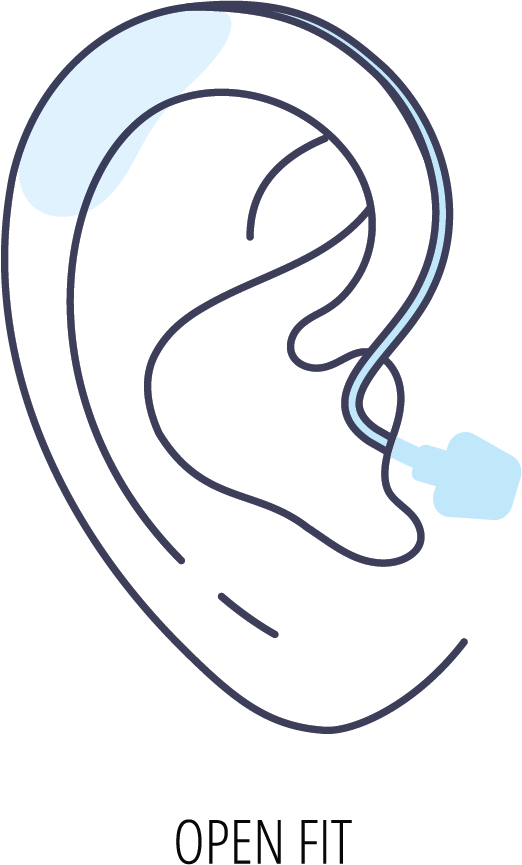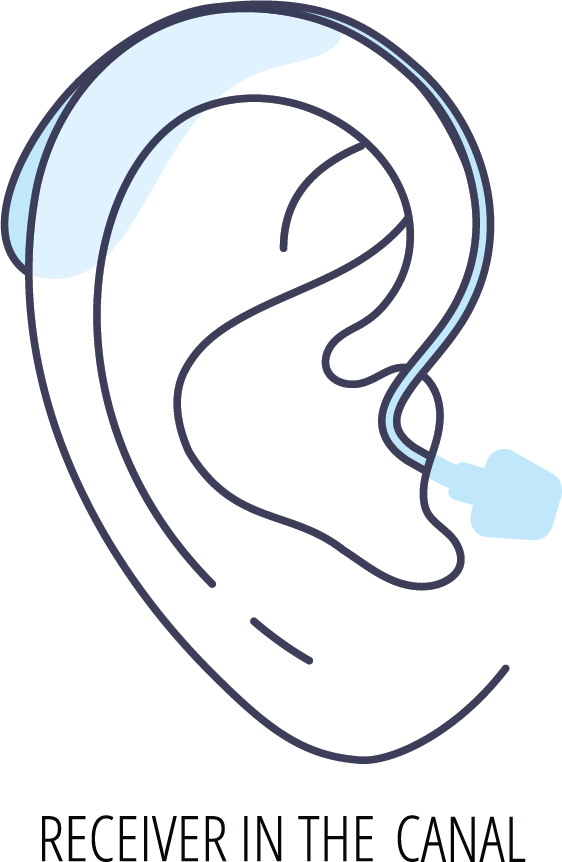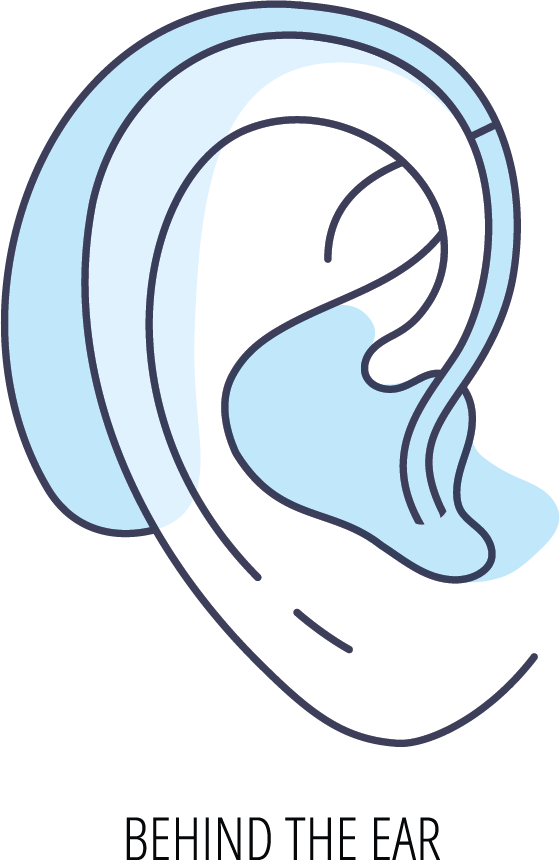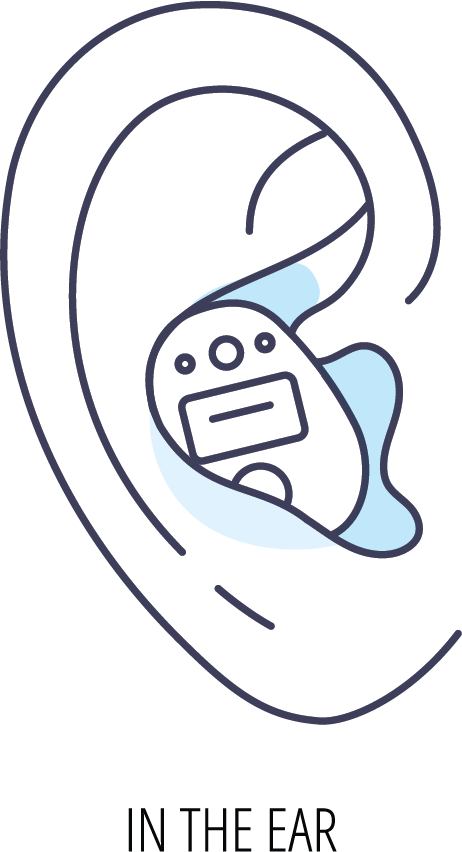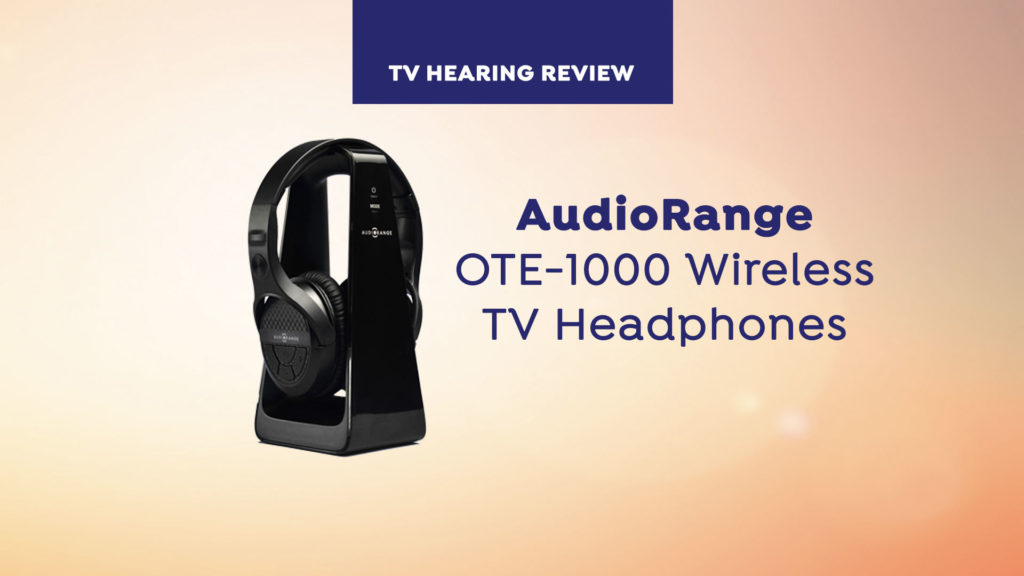
What Are the Different Types of Hearing Aids?

Hearing loss is extremely common as we age and there are more options than ever to help adults counter this loss–especially with the FDA approving over-the-counter hearing aids. Choosing the right ones requires knowing what’s causing your hearing loss and your budget. But you also need to choose the type and style of hearing aid. And with acronyms like ITE and BTE and CIC, it is common to question what are the different types of hearing aids and how do they differ? The different types of hearing aids typically are characterized by how visible they are and how they fit onto or into the ear. Yet, each type of hearing aid has some pros and cons to consider.
Find What You Need
Open Fit
Open fit devices look like BTE (behind the ear) and RIC (receiver in canal) styles combined. The case which holds the battery, buttons, and microphone(s) fits snugly behind the ear. A thin, typically translucent tube rests inside the ear canal. Open-fit hearing aids are beneficial when it comes to hearing your voice better while keeping the canal unblocked. This allows for low-frequency noises to swiftly enter the ear while high-frequency noises are intensified via the hearing aid.
Receiver In Canal (RIC)
RIC is another BTE (behind the ear) style but is the smallest BTE instrument. RIC hearing aids have speakers or a receiver that’s inserted into the canal. Unlike an Open fit style, a RIC will have a very thin wire and not a tube and has a less visible, smaller case in comparison. There’s more customization when it comes to the microphone and other user controls that come with it on the case.
Behind the Ear (BTE)
BTE hearing aids have cases that fit behind the ear and have an attached custom-made earpiece that’s made to mold perfectly within the ear canal. BTE is the most common type of hearing aid and can improve any kind of hearing loss, ranging from mild to severe. BTE models have features that you won’t see in smaller types, including volume control, customization, and rechargeable battery lives.
In the Ear (ITE)
ITE hearing aids fit snugly into the concha of the ear like a pocket. Some ITE models fit into just half of the lower concha for those wanting something smaller. ITE hearing aids are beneficial to those with hearing loss that ranges from mild to severe. Moreover, maintenance of an ITE hearing aid is usually easier to deal with than others.
In the Canal (ITC)
ITC hearing aids are molded and fit snugly into the ear canal. Although an ITC is much less visible than others, it is mainly used by those with mild to moderate hearing loss. For people with severe hearing loss, ITC is not the best choice. Moreover, it is increasingly difficult to customize various features such as the volume.
Completely in the Canal (CIC)
Unlike most types of hearing aids, CIC hearing aids fit deeply into the ear canal and are almost invisible. They treat mild to moderate hearing loss. However, CIC models are usually harder to maintain – because of the small batteries (with shorter life spans) and fewer features than a typical BTE hearing aid.
Micro Completely in the Canal (Mini CIC)
Micro CICs are essentially much more petite versions of a CIC – they are completely invisible, as they are deep in the ear canal. They come with all the positives and negatives as a regular CIC, but they are slightly harder to maintain with their tiny body.
Making the Right Choice for You
The different types of hearing aids available give you a variety of choices in terms of performance, comfort, aesthetics, and ultimately, quality of life. With more options and easier availability of hearing aids, you don’t have to let hearing loss hold you back or impede your enjoyment of life.

